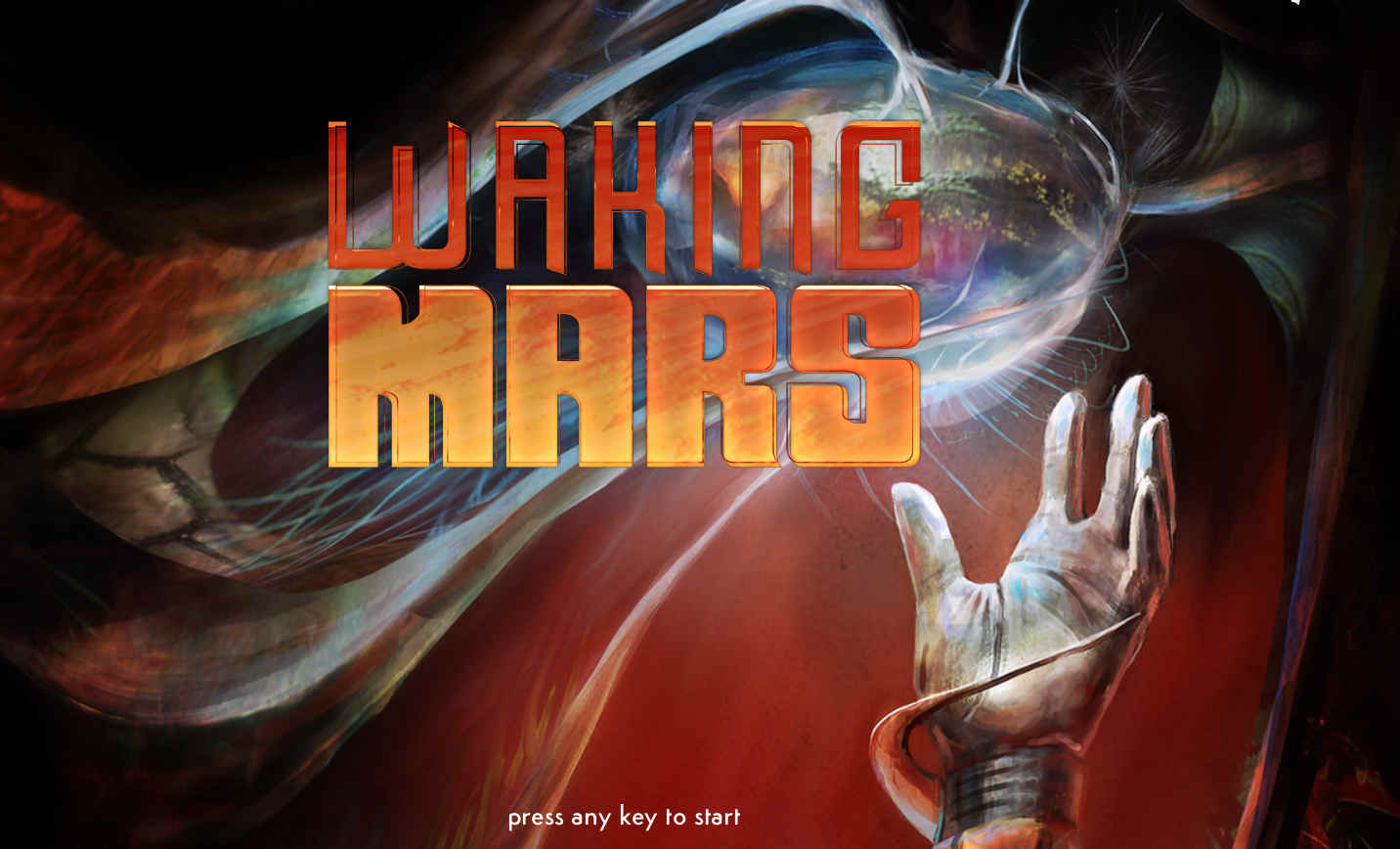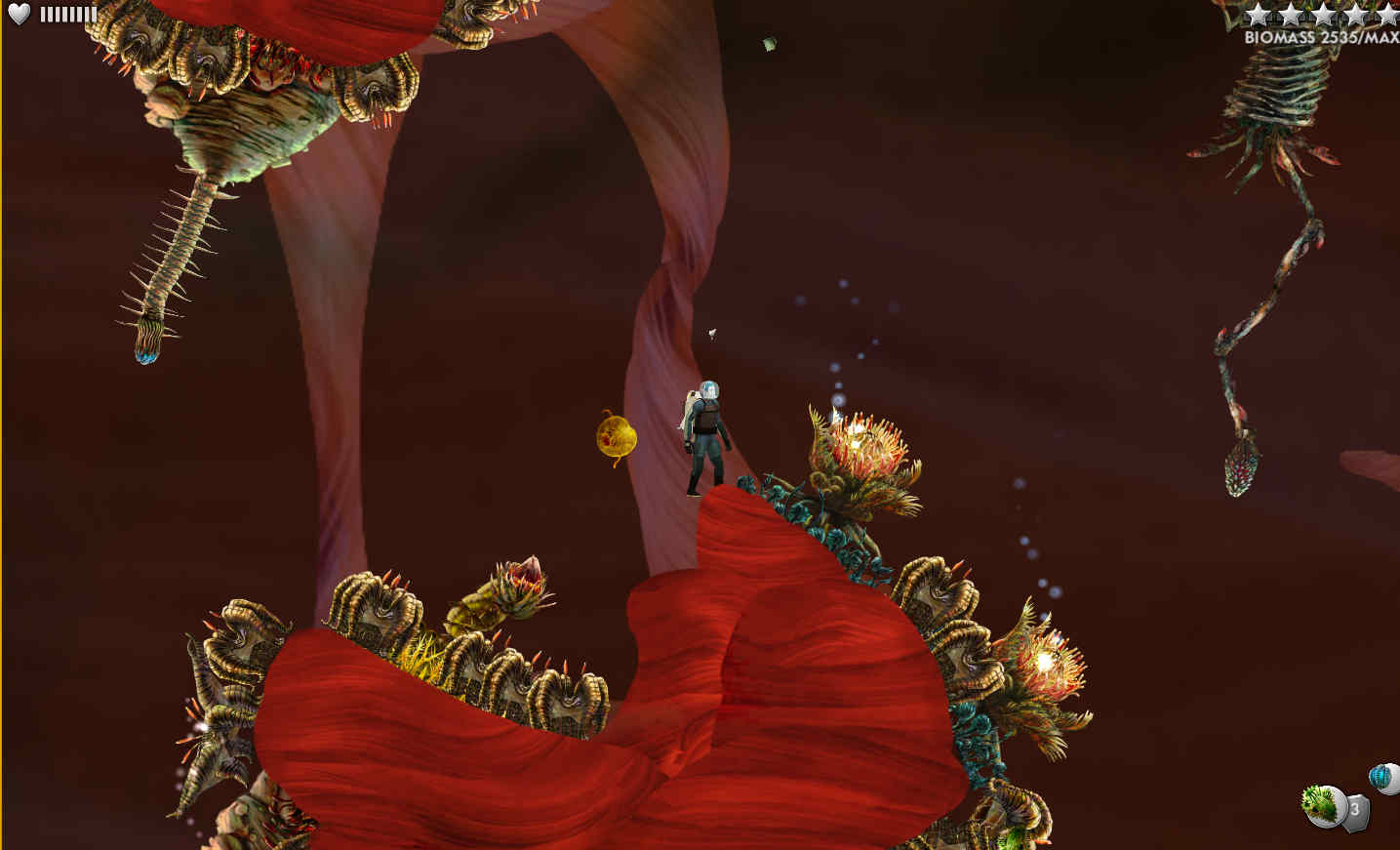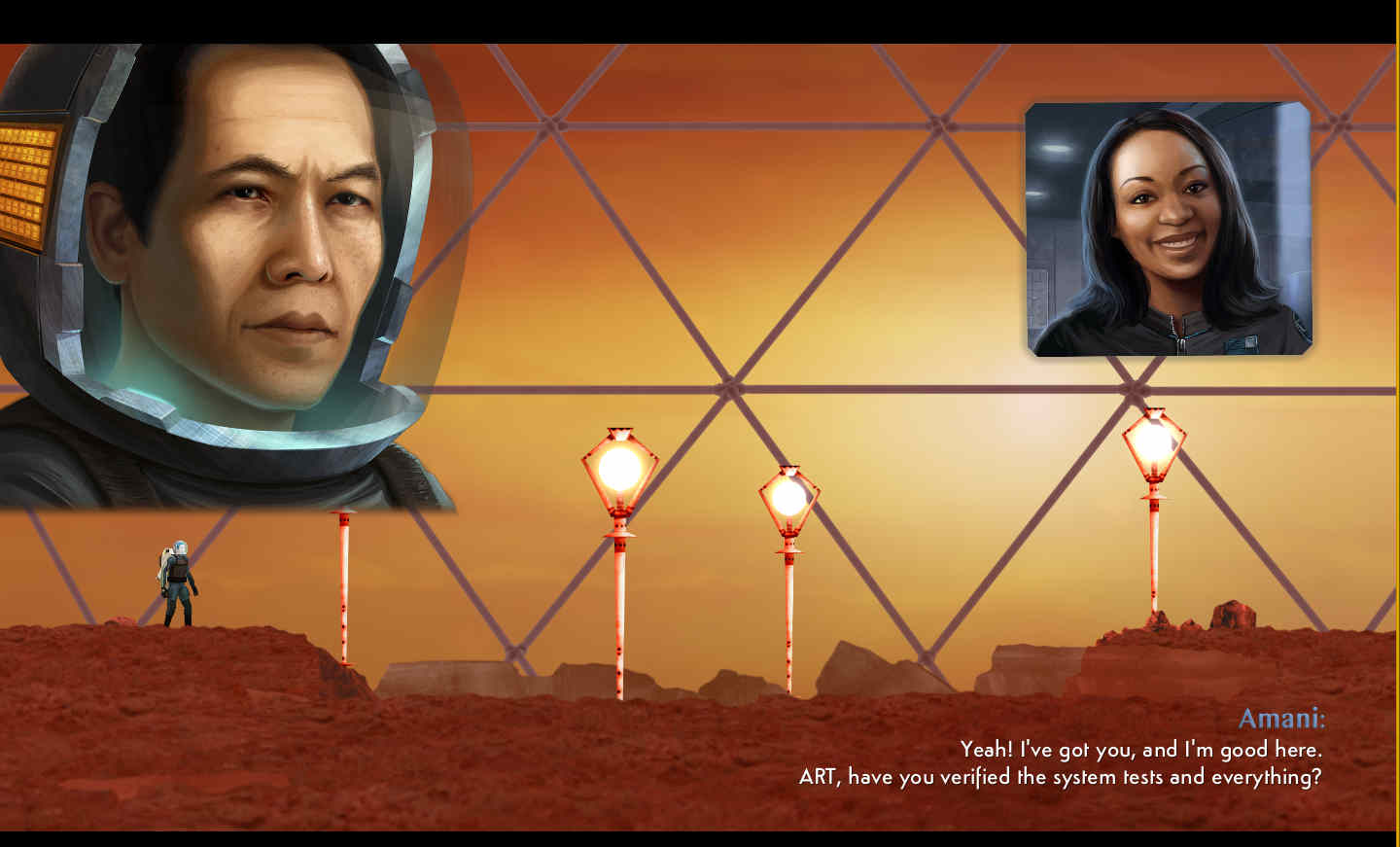Waking Mars
- Genre: Puzzle/Adventure/Platformer
- Published: 2012
- Platforms: iOS, Android, Windows, Mac, GNU/Linux
- Website: http://www.wakingmars.com/

Self-published in 2012 by Tiger Style, Waking Mars is a notable game in many regards. Essentially its gameplay can be described as "Metroidvania meets gardening", but the game experience goes far beyond such simple descriptions.
To begin with, Waking Mars is one of the vanishingly few "hard" science fiction games in existence. Considering the geek roots of the gaming industry this does come as a bit of a surprise, but the experience of scientific endeavour has hardly been explored in games at all. Most science fiction games fall into the "Lord of the Rings in space" camp, with the focus being on strange alien cultures and various space opera themes. Refreshingly, Waking Mars avoids all of these tropes in favour of something original in gaming. One of the important roots of science fiction as a genre lies with scientists trying to communicate their discoveries and their way of life to a broad public, and this style of storytelling is the basis of Waking Mars' narrative. The main characters of Waking Mars are scientists, and the tension in the plot comes not only from the excitment of dangerous research "in the field," but also from the anticipation of scientific discovery and the expansion of human knowledge. First contact with alien life is handled here not mainly in sociological but rather biological terms. While avoiding overly technical diversions, plentiful references to archeology, geology, botany, and biology are found in the game's script, and "research files" are filled out by the player as they catalogue the behaviour and characteristics of the flora and fauna of Lethe Cavern. While games like Pokemon have long had these sorts of encyclopedias, Waking Mars manages to integrate this game element into a broader sense of scientific discovery and enhances the sense of immersion experienced by the player.
Waking Mars also breaks new ground in being one of the first Western developed games to feature an "all-minority" cast. The two main characters are Liang, a male Chinese scientist, and Amani, a female African-American scientist and programmer. They are accompanied by a talkative AI named ART and a survey robot named 0CT0. It is rare enough for a game to feature something other than the chisel-jawed man (or occasionally woman) of action and opt instead for a cast of scientists, but for a game to ignore the common wisdom that a game without a White lead won't sell is truly uncommon.
It was also surprising to see Tiger Style choose to provide a fully voice-acted script. Something indie developers usually avoid because of the considerable cost of voice acting. Perhaps they were able to do so because there are only three characters with lines in the script, but it certainly adds to the game experience by increasing the player's attachment for the characters and their motivations.
Moving from the spoken and written narrative to the main gameplay, Tiger Style continues to show a considerable capacity for innovation. At its core, Waking Mars involves collecting "zoa" seeds and using them to plant new zoa in the appropriate locations so as to get enough biomass to open the gate to the next area of Lethe Cavern and progress the story. There are also some very basic platforming elements involved, as Liang has to dodge obstacles while maneuvering around the cavern with his jetpack. However the controls are wonderfully sharp, and health recharge locations are so plentiful as to make the platforming aspect of the game offer little real challenge. What makes Waking Mars so enjoyable is the ability of the different attributes of each zoa species and the interaction between species to promote emergent gameplay. Just like in a real garden, species have various effects on other plants around them, and grow differently according to the soil in which they are planted. However in Waking Mars these effects are greatly accelerated, causing most of the challenge of the game to be found in managing the gamespace effectively so as to maximize biomass. While part of gameplay involves destroying zoa, this feel more like pulling weeds than laying waste to alien hordes like in a game such as Mass Effect and the game has a generally "non-violent" feel. In especially fertile areas the game environment becomes reminiscent of the famous Brinstar area in Super Metroid, with its teeming variety of alien lifeforms.

The beauty of Waking Mars' art is not well represented by screenshots, as it really only becomes apparent when its world comes alive in motion. The high- resolution sprites used by the game move fluidly, and Liang's spite in particularly reacts in a lifelike manner to the environment around him (For example throwing his arms up in front of him when he is about to collide with a cave wall). Small details of animation do a lot to making moving around in the game world a joy. Characters are not only represented by sprites, but also by a wide variety of large high-resolution portraits that appear during conversations. Again, this helps considerably with connecting the player to the characters, and once again the small cast of characters helps Tiger Style put their limited resources to good use.

If there is anything to criticize in Waking Mars, it is its endgame. Because the developers chose concentrate the game's challenge not on in its platforming aspects but rather on the difficulty of controlling the gamespace, they are forced as the game goes on to make areas less and less fertile and more and more difficult to manage. In some areas this works well, but in others it quickly becomes tiresome. Seeing your biomass count plummet when a group of zoa over which you have little control are destroyed by a stray shot from a fire-spitting zoa is extremely frustrating. To some extent this is resolved by letting the player instantly travel to any area in the game via the map, therefore allowing them to quickly replenish their stores of seed and start over, but some areas can only be cleared through determination and luck. It seems Tiger Style was aware of this problem, because the game can be finished without clearing these more difficult sections at all. It is only if the player wishes to push on to get the best ending that they must endure some frustration.
Finally, I did encounter some technical problems in running the game on my GNU/Linux system. I downloaded my copy of the game from The Humble Bundle website and had no problem installing the .deb package in Linux Mint 15. However there was a bug in the game that caused it to crash the system occasionally. I was able to resolve this by installing a patch available on the Tiger Style website, but it would have been nice if Tiger Style was able to update the package available on the Humble Bundle site or included a note mentioning the need for a patch.
Overall Waking Mars is one of the very few games I feel has lived up to the full promise of indie games production, and I would highly recommend it to anyone interested in a new gaming experience.
